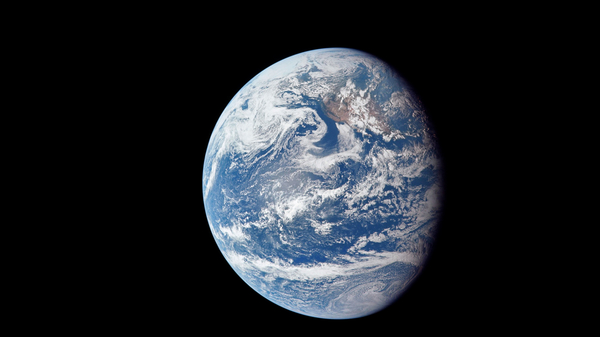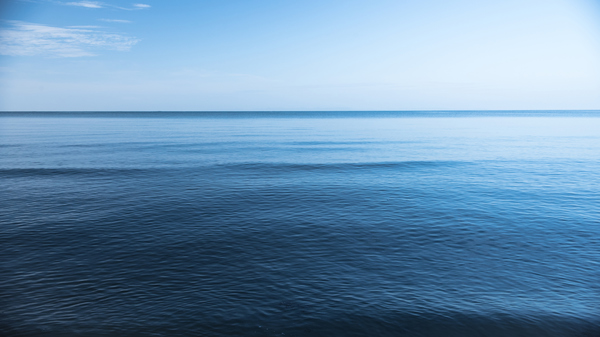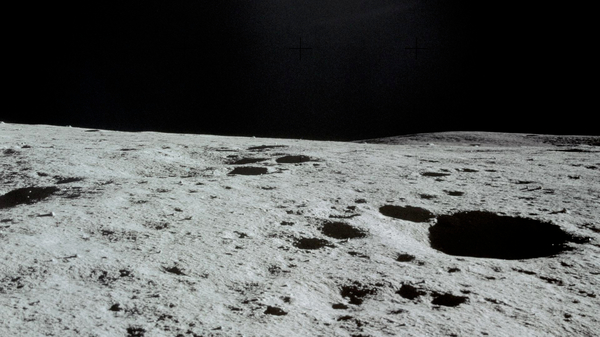Earth: The Living Planet
At the moment, Earth is the only place in the solar system—or beyond—where life is known to exist.

When seen from space, Earth is often described as a “Blue Marble.”
NASA
The Crescent Moon, Saturn & Venus align in January 2025
A Brief Overview of Earth
Earth is the third planet from the Sun, and the largest of the rocky inner planets. It is home to many different forms of life, from microscopic organisms to plants and animals.
Compare the sizes and order of the planets
About 71 percent of the surface is covered by a layer of liquid water; the average depth of these oceans is about 3.7 kilometers (2.3 miles). The land is divided into continents, which move slowly over time. About 200 million years ago, nearly all of Earth’s land was joined together in a supercontinent called Pangaea.

Although water can be found in many places throughout the solar system, Earth is unique in having a large body of liquid water on its surface.
©iStockphoto.com/peangdao
What Is the Shape of Earth?
Like all planets, Earth is a sphere. However, it is not a perfect sphere: its spin makes it bulge by a tiny amount at the equator. Earth’s circumference measured around the equator is 40,075 kilometers (24,901 miles); measured around the poles, it is 67 kilometers (42 miles) less.
With the exception of Mercury and Venus, other planets in the solar system are also slightly flattened at the poles.
How Long Is a Day and a Year?
A day on Earth is usually defined as 86,400 seconds (24 hours). However, a solar day—the time between two solar noons, when the Sun reaches its highest point in the sky—can vary by up to 30 seconds throughout the year. Also, the time it takes Earth to spin once on its axis can vary by a few milliseconds.
A year on Earth is approximately 365 and a quarter days.
Is there such a thing as a perfect calendar?
How Many Moons Does Earth Have?
Earth has one natural satellite, called the Moon. It was possibly formed when a large object, about the size of Mars, crashed into Earth in the early days of the solar system. The debris created by this collision was pulled together by gravity to make the Moon.
In terms of size relative to its parent planet, the Moon is unusually large. Its diameter is 3476 kilometers (2160 miles), which means it is around 27 percent the size of Earth. The next biggest moon in the solar system by this measure, Triton, is only about 5 percent the size of its parent planet, Neptune.

The Moon is a barren, lifeless world. But its large size has played an important role in the development of life on Earth—for instance, by creating tides in Earth’s oceans.
NASA
Human Exploration of Earth
Humans had reached most parts of the globe by around 15,000 years ago. Yet some places on Earth remained undiscovered until relatively recently. Perhaps the most notable example is the continent of Antarctica, which was not found until 1820—four decades after the discovery of Uranus.
In terms of the exploration of life on Earth, a vast amount remains undiscovered, even today. According to conservative estimates, only about 15 percent of all living species on Earth are known.
How Long Does It Take to Orbit Earth?
Orbital period—the time it takes to complete one orbit—depends on distance. The closer an object is, the faster it travels. Here are some examples, using approximate numbers, of how long an object takes to go around Earth one time.
The International Space Station
- Distance above Earth: 400 km (250 mi)
- Orbital period: 90 minutes
A GPS satellite
- Distance above Earth: 20,000 km (12,500 mi)
- Orbital period: 12 hours
A geostationary satellite
- Distance above Earth: 36,000 km (22,000 mi)
- Orbital period: 24 hours*
The Moon
- Distance from Earth: 384,400 km (240,000 mi)
- Orbital period: 27.3 days (a sidereal lunar month)
* This is the same time it takes Earth to rotate once on its axis. Therefore, when seen from Earth, a geostationary satellite always appears to be in the same place.